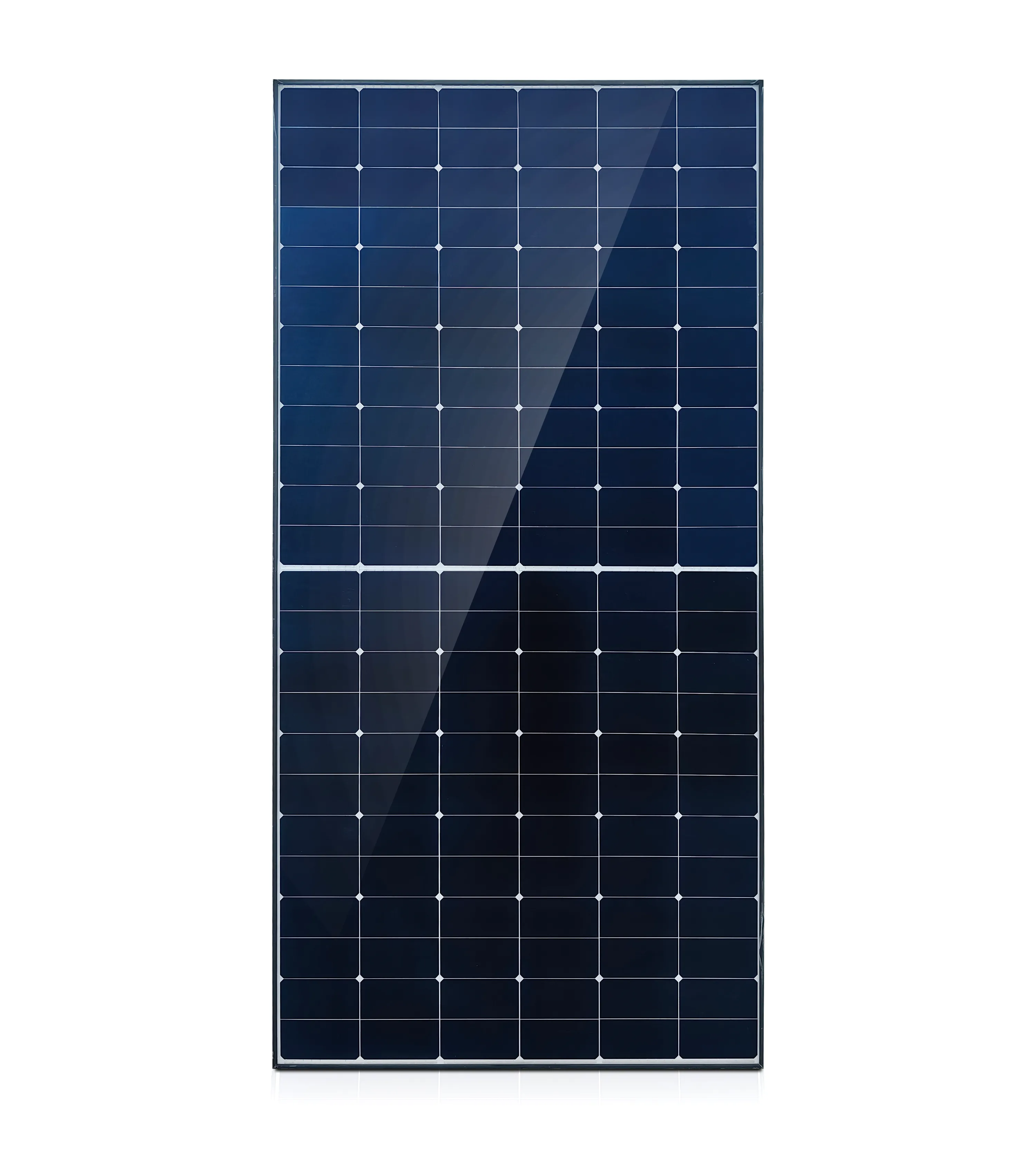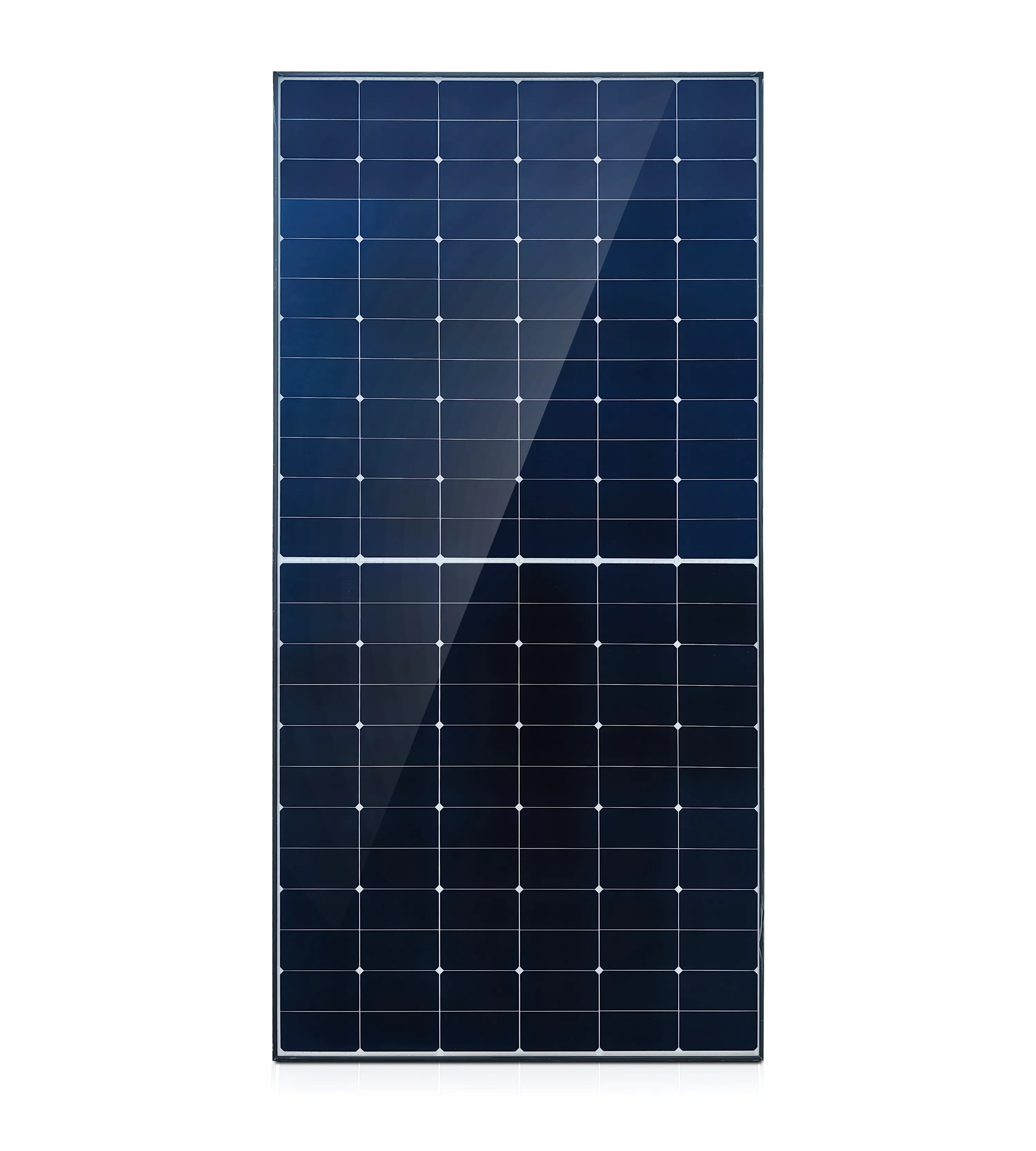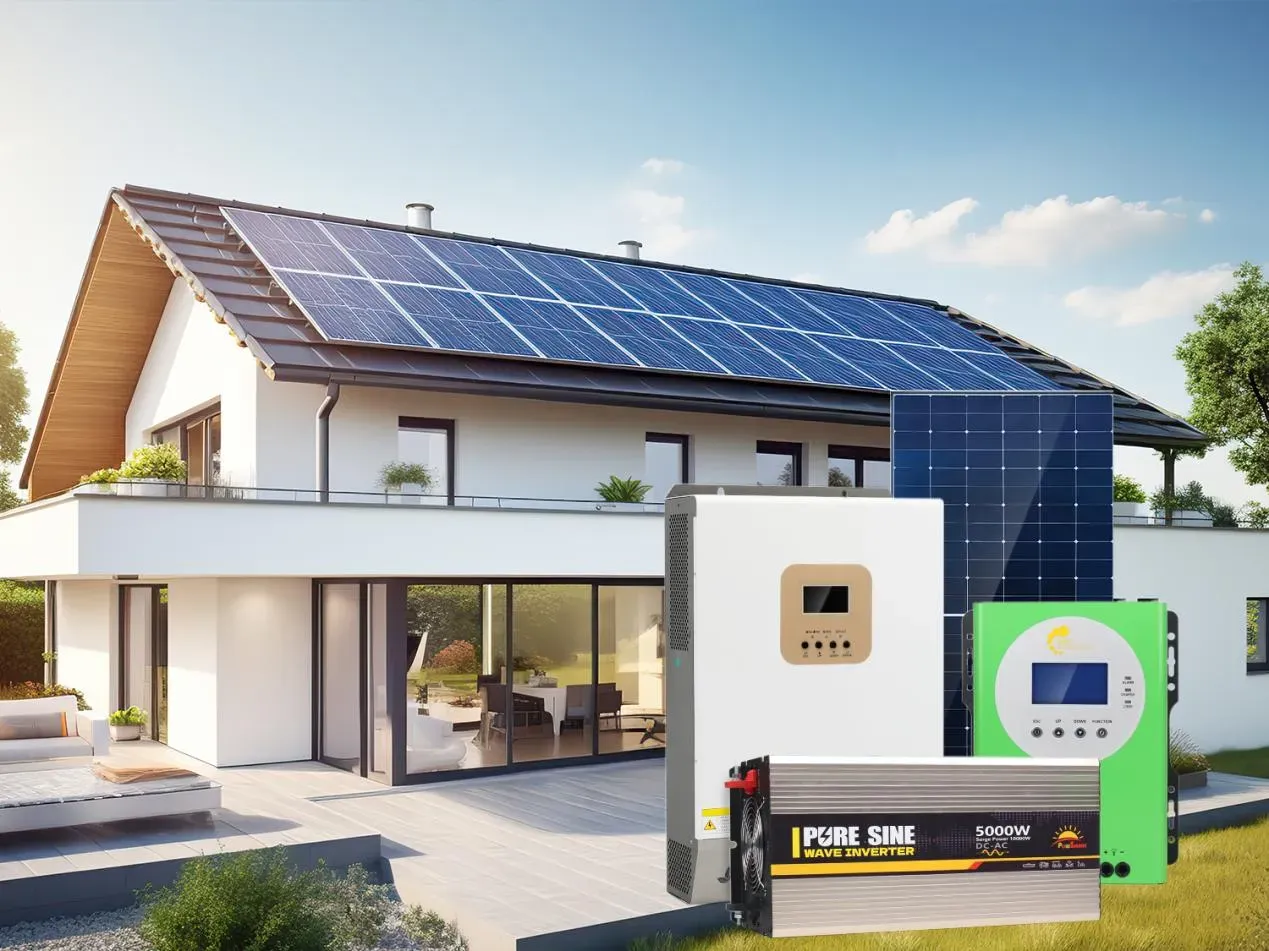
Solar Energy Generating Panel
Our solar energy generating panels are engineered to convert sunlight into clean, renewable electricity at maximum efficiency. These panels are perfect for family homes, business premises and industries as they offer reliable and sustainable sources of energy. Using advanced photovoltaic technology, our panels generate a considerable amount of electricity and resilience even in extreme weather conditions.
Solar Charge Electric Panel
Providing effective recharging solutions, our solar charge electric panels can be used to power various gadgets as well as battery systems. Our panels provide an alternative ecofriendly way of charging batteries for off-grid systems, recreational vehicles or portable electronic devices rather than using conventional sources of power. Because they have high output levels and small sizes thus these electronic accessories will fit any type of solar system.
Solar Air Conditioner Electric Panel
Control the heat but save on electricity bills using our solar air conditioning energy panels. These panels have been designed specifically to complement your normal AC by providing power; keep that in mind when choosing your panel . It is possible to reduce your utility bill significantly by applying solar power which is a green source of energy while creating an atmosphere that is conducive indoors.
Solar Power Electricity Generating Panel
Our large-scale photovoltaic generation units are the basis of any solar installation. They transform light from the sun into usable electric current that can serve wide applications such as domestic use or commercial need up to industrialized solars acres like those spread across California deserts. If you are looking for efficient devices that will take you away from reliance on fossil fuel completely then these are exactly what you need!
Main Characteristics:
Energy conversion: The most advanced photovoltaic technology ensures higher yields.
Endurance: Built tough to survive worst climatic condition having longer operational hours.
Multi-purpose: Applicable in various areas including charging, cooling and general electricity production.
Green: Helps eliminate fossil fuel dependency lowering CO2 emissions.
At CN Inverter, we strive to offer everyone top-notch solar solutions according to their requirements. Our solar panels are a testament of our commitment towards advancing green technology and sustainability providing reliable and efficient energy solutions for now and the future.

Cutting-Edge Solar Panels for Optimal Energy Performance These are the most technologically advanced solar panels on the market that guarantee maximum energy efficiency and dependability. Such panels exploit the sun’s rays as an eco-friendly source of power, which will cut down on fossil fuel reliance. Our inventive solar panels are designed to provide a continuous superior productivity for residential or commercial use in order contribute towards a more environmentally friendly future. For those who wish to get the best out of their energy consumption and reduce their carbon print these materials are just perfect.

Our state-of-the-art solar panel technology changes the game in renewable energy generation. These panels can trap sunlight and transform it into electric power with a high level of effectiveness. Our panels are capable to stand extreme weather conditions and assure continuous source of power for a long period of time. Our solar panels are suitable for various uses from residential rooftops to big commercial setups providing a dependable source of electrical power. Get started on the future by purchasing our highly efficient solar panels designed to not only offer you an amazing performance but also save the environment in a great way.
Solar panels are at the forefront of technological invention aimed at sustainable energy. A revolution has been brought about in energy generation by advances made in photovoltaic technology which have led to more efficient and cost-effective solar panels. Modern panels enhance sunlight absorption and electricity production through the use of advanced materials and designs. Every variant from monocrystalline to thin film technologies comes with its unique advantages thus meeting different types of power needs ranging from residential roof tops to huge industrial enterprises. This sector’s focus on increasing energy outputs is illustrated by innovations such as bifacial panels that can harvest light from their two sides. Aside from just converting renewable resources into electricity, this technology when combined with intelligent monitoring systems and integrated battery storage also ensures grid stability as well as power autonomy.
Solar panels have a significant part to play in the ongoing move that the world is making toward green energy. It does not only provide clean electricity by means of solar panel which harnesses substantial amount of sun’s heat, but also helps reduce carbon footprints and dependency on fossil fuels. Consequently, solar energy systems are versatile and can be used anywhere hence empowering people who live there as well as businesses to adopt renewable energy solutions. Additionally, innovations in durability and efficiency of these plates guarantee many years for using them and best performance, meaning that they can serve as a good investment into the purest infrastructure. In the context where governments and industries across the globe have committed themselves to achieving net zero emissions within their jurisdictions, panels emerge as one of the key technologies driving green jobs in renewable power sector leading to economic development. Over time, solar panels are being improved through research as well as development while promising even greater efficiency at better prices tomorrow.

Sunrise New Energy is a one-stop provider of energy storage and photovoltaic power generation solutions. Our mission is to create a new way of life by integrating clean energy into our daily lives and achieving perfect harmony between man and nature. As a professional solar module and system solution provider, our products will benefit more people!
Our products include off-grid inverters, solar hybrid inverters, solar controllers, solar panels, storage batteries, PV off-grid systems, grid-connected systems, hybrid systems, PV racking systems, and other PV series products, and have been certified by FCC, ETL, CE, and so on.
Our inverters and batteries are designed for superior performance and reliability.
We ensure smooth processing and timely delivery of large-scale orders.
Our products feature cutting-edge technology for optimal energy solutions.
We provide responsive and knowledgeable support for all client needs.
Solar panels work by converting sunlight directly into electricity through a process known as the photovoltaic effect. Here’s a step-by-step explanation of how solar panels generate electricity:
Photovoltaic Cells: Solar panels are made up of multiple photovoltaic (PV) cells, which are typically made of silicon or other semiconducting materials. Each PV cell consists of two layers of semiconductor material, usually treated to create a positive and a negative charge.
Absorption of Sunlight: When sunlight hits the solar panel, photons (particles of light) from the sunlight are absorbed by the semiconductor material in the PV cells. This process excites electrons within the material, causing them to move and create an electric current.
Generation of Electricity: The excited electrons flow through the semiconductor material towards metal contacts at the edges of the solar cell, creating an electric current. This current is direct current (DC) electricity.
Conversion to AC (Alternating Current): Most household appliances and the electricity grid operate on alternating current (AC), not DC. Therefore, solar inverters are used to convert the DC electricity produced by solar panels into AC electricity that can be used in your home or fed into the grid.
Power Usage: The generated AC electricity can then be used to power your household appliances or be fed into the electrical grid if your solar panel system is connected to it.
Efficiency: Solar panel efficiency refers to how much sunlight the panels convert into usable electricity. Higher efficiency panels can produce more electricity per square meter of solar panel.
Orientation and Angle: The orientation and tilt angle of solar panels affect their efficiency. Panels facing south and tilted at an angle equal to your latitude generally receive the most sunlight throughout the day.
Net Metering: In many places, excess electricity generated by solar panels can be fed back into the grid, with your utility company giving you credit for the electricity you provide.
Storage: Some solar panel systems are paired with battery storage systems to store excess electricity for use during periods of low sunlight or at night.
Solar panels have become increasingly popular due to their ability to generate renewable energy, reduce electricity bills, and contribute to lowering greenhouse gas emissions.
The cost of solar panels can vary widely depending on several factors, including the type and quality of the panels, the size of the system, installation costs, and geographic location. As of recent trends:
Cost per Watt: The cost of solar panels is often discussed in terms of dollars per watt ($/W). As of the latest data, the average cost per watt for solar panels in the United States ranges from $2.50 to $3.50, depending on various factors such as panel efficiency, brand, and installation complexity.
Total System Cost: For a typical residential solar panel system in the U.S., which might range from 5 kW to 10 kW in size, the total installed cost before incentives can vary from $10,000 to $35,000 or more. This total cost includes not only the cost of the panels themselves but also inverters, mounting hardware, wiring, and installation labor.
Factors Affecting Cost:
Long-Term Savings: While the initial investment in solar panels can be significant, they often pay for themselves over time through savings on electricity bills and potential incentives. The exact payback period depends on factors such as electricity rates, solar panel efficiency, and local incentives.
Commercial vs. Residential: Commercial-scale solar installations tend to have lower costs per watt compared to residential installations due to economies of scale and simpler installation logistics.
It's essential to get quotes from several reputable solar installers in your area to get a personalized estimate based on your specific needs and circumstances. Additionally, checking for available incentives and rebates can help offset the initial cost of installing solar panels, making them a more attractive investment in the long run.
Solar panels are known for their durability and longevity. Here are some key points regarding the lifespan of solar panels:
Manufacturer Warranty: Most solar panels come with a manufacturer's warranty that guarantees their performance for 25 years. This warranty typically ensures that the panels will still produce a certain percentage (often around 80% or more) of their rated power output after 25 years.
Actual Lifespan: Solar panels can last well beyond their warranty period. Many panels continue to generate electricity effectively for 30 years or more, with some studies suggesting they can maintain around 80% of their original efficiency even after 30 years of use.
Factors Affecting Lifespan:
Degradation Rate: Solar panels experience a gradual decrease in efficiency over time, known as degradation. This is typically minimal, averaging around 0.5% to 1% per year for most high-quality panels.
End-of-Life: At the end of their useful life, solar panels are typically recycled to recover valuable materials such as silicon, aluminum, and glass, reducing environmental impact.
Overall, solar panels are a long-lasting investment that can provide clean and renewable energy for decades, contributing to energy savings and reducing carbon footprint over their lifespan.
Solar panels work by converting sunlight directly into electricity through a phenomenon called the photovoltaic effect. Here’s a step-by-step explanation of how solar panels generate electricity:
Photovoltaic Cells: Solar panels are made up of photovoltaic (PV) cells, which are typically made from silicon or other semiconductor materials. Each PV cell consists of two layers of semiconductor material. When sunlight hits the cell, it excites electrons in the semiconductor material, generating an electric current.
Absorption of Sunlight: Sunlight is composed of tiny particles called photons. When photons strike the surface of the PV cell, they transfer their energy to electrons in the semiconductor material. This process creates an electric potential difference between the layers of the cell, causing electrons to flow and creating an electric current.
Electrical Conductors: The electric current generated by each PV cell is direct current (DC). Electrical conductors within the solar panel collect this DC electricity from multiple cells and channels it to the output terminals.
Inverter Conversion: Most electrical appliances and the electricity grid operate on alternating current (AC). Therefore, the DC electricity generated by solar panels is fed into an inverter, which converts it into AC electricity suitable for use in homes, businesses, or the grid.
Power Usage: The AC electricity produced by the inverter can then be used to power electrical devices and appliances directly in your home or business. Excess electricity can be fed back into the grid if your solar panel system is grid-tied, potentially earning you credits or revenue depending on local regulations.
Efficiency: Solar panel efficiency refers to how much sunlight the panels can convert into usable electricity. Higher efficiency panels can produce more electricity per square meter of solar panel.
Orientation and Angle: The efficiency of solar panels can be optimized by orienting them to face the sun directly and adjusting their tilt angle to maximize exposure to sunlight throughout the day.
Net Metering: In many regions, net metering allows homeowners with solar panels to receive credits for excess electricity they generate and feed back into the grid.
Environmental Impact: Solar panels generate electricity without emitting greenhouse gases, making them a key technology in efforts to combat climate change and reduce reliance on fossil fuels.
Solar panels have become increasingly popular due to their ability to harness renewable energy from the sun and provide clean electricity for homes, businesses, and communities around the world.
The cost of solar panels can vary widely depending on several factors, including the type and quality of the panels, the size of the system, installation costs, and geographic location. As of recent trends:
Cost per Watt: The cost of solar panels is often discussed in terms of dollars per watt ($/W). As of the latest data, the average cost per watt for solar panels in the United States ranges from $2.50 to $3.50, depending on various factors such as panel efficiency, brand, and installation complexity.
Total System Cost: For a typical residential solar panel system in the U.S., which might range from 5 kW to 10 kW in size, the total installed cost before incentives can vary from $10,000 to $35,000 or more. This total cost includes not only the cost of the panels themselves but also inverters, mounting hardware, wiring, and installation labor.
Factors Affecting Cost:
Long-Term Savings: While the initial investment in solar panels can be significant, they often pay for themselves over time through savings on electricity bills and potential incentives. The exact payback period depends on factors such as electricity rates, solar panel efficiency, and local incentives.
Commercial vs. Residential: Commercial-scale solar installations tend to have lower costs per watt compared to residential installations due to economies of scale and simpler installation logistics.
It's essential to get quotes from several reputable solar installers in your area to get a personalized estimate based on your specific needs and circumstances. Additionally, checking for available incentives and rebates can help offset the initial cost of installing solar panels, making them a more attractive investment in the long run.
